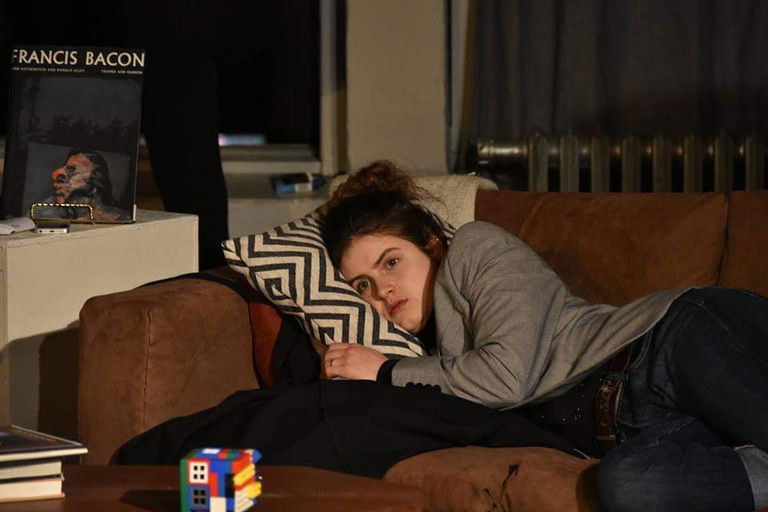
Refresh: How a Year on Instagram Redefined Artistic Communities
Eva Morrison for Culture Days
Jul 15, 2021
Instagram’s real strength is its ubiquity. The platform evaded the frustrating pandemic cycle of closing, reopening, and closing again: it was just always there. And, while that pandemic cycle ran on a loop, communities were formed and solidified on this social network by sharing artworks, information, thoughts, and opinions as the art world changed around us.
Over the past year, as pandemic measures forced galleries and other physical arts and culture venues to close, internet connectivity surged and Instagram became the predominant photo-sharing platform for many emerging artists. Stuck at home throughout provincial lockdowns and curfews, many of us swiped down to refresh our IG time-line multiple times a day…maybe more than we’d like to admit. There’s no doubt that the smartphone-based platform flattens and simplifies both the actual artworks and the conversations around them; however, in the pandemic context it became an invaluable starting point to strengthen our community connections and define our intentions as artists or organizations going forward.
At times, the move online was a reluctant one. An Instagram post cannot compare to a physical art exhibition—as any painter will be quick to tell you, it looks much better in person. An online interaction does not equate to a real-world social exchange, nor can we rely on the app to be the only community network, or even a truly democratic one. What’s most interesting is how Instagram developed parallel to art spaces and institutions as a public system of connectivity and support between creatives.
Instagram’s real strength is its ubiquity. The platform evaded the frustrating pandemic cycle of closing, reopening, and closing again: it was just always there. And, while that pandemic cycle ran on a loop, communities were formed and solidified on this social network by sharing artworks, information, thoughts, and opinions as the art world changed around us. Throughout this past year, the platform was redefined as a site for alternate modes of sharing and selling contemporary art, through digital art spaces built by the community for the community.

This engagement on Instagram actively refreshed our systems of disseminating contemporary art. The platform facilitated the development of a community-led annex of emerging artists and events; when galleries and art institutions closed, curated accounts emerged to show work on a local and global scale. Over the course of an ex-tended lockdown in Québec, new accounts like @mtlpainters and @peinturecontemporaine_quebec gained traction with a mandate to keep our community strong. In Ontario, @curatedtoronotart has asserted itself as an online gallery space featuring works from Toronto-based artists. Existing on a free, accessible platform meant users could build networks easily, effectively forming a digital archive of emerging artists and works produced over the last year.
Instagram-based projects also regenerated systems of marketing and selling artworks using online auctions or flash sales. “Les Encans de la Quarantaine”, an initiative auctioning off local artworks on Instagram and Facebook, was founded during Montréal’s lockdown to support artists amidst uncertainty and anxiety. The team behind the project identified the spike in online media consumption during the early days of the pandemic and the sense of solidarity forming between artists on social media platforms, explaining that “the audience was there for it, waiting for anything to happen online.” This year the project successfully helped over 300 artists sell works and the team recently received a grant from the Canada Council for the Arts’ Digital Strategy Fund to create an independent web platform, solidifying their position as a resource for independent and unrepresented artists in Canada.
Instagram can also be a place to build and shape the identity of existing galleries and institutions, or call to restructure them. Throughout the pandemic, we witnessed power shifts within major Canadian cultural institutions—labour disputes at the MAC, the controversy surrounding the firing of MMFA Director Nathalie Bondil, allegations of discrimination at the Canadian Museum for Human Rights—which reflect a current heightened awareness of social and racial justice issues. In this context as well, Instagram prevailed as an accessible resource for the arts community, as accounts like @artsaccountability shared information surrounding current events. In this way, Instagram was used as a tool to amplify voices calling out racism and injustices in the art world.

This opened a space for institutions to reinstate their intentions on Instagram, already a platform for identity building. Artist-run centre Articule posted an open letter to their contemporaries in Québec, calling to move beyond statements of solidarity against systemic oppression online by aiming to integrate concrete changes into their programming. As they wrote, “it is not adequate to post once a year on Instagram as proof of progressive politics or to rewrite an About section to include a mention of diversity…We must commit to radical, tangible, long-term, proactive support for Black and Indigenous artists, members, curators, and publics.” Moves like this one effectively used Instagram as an information-sharing tool and a starting point for progressive dialogue, while recognizing the performative quality of activism that is solely based online.
Instagram has always been a place for discourse; users assert their opinions on everything from celebrity gossip to current events, but discussions on Instagram—like the pictures, lifestyle blogs, and advertisements on the app—can be misleading and do not show all angles. The photo-based format is simply not made for open dialogue, the algorithm prioritizes certain voices, and the app itself has been accused of deleting political posts. Recently, multiple Instagram members found their stories and posts on Missing and Murdered Indigenous Women and Girls (MMIWG) were removed from their social media on Red Dress Day, a day meant to raise awareness of the issue. Instagram promptly took to Twitter to assert that it was “a global technical issue not related to any topic” and was met with skepticism and mistrust. This series of events was immediately circulated in new posts and stories, encouraging users to research and raise awareness offline as well. While the app’s ability to instantly transmit information is valuable, it functions best as a means of connection and point of departure for conversations, mobilization, and social change that happens beyond Instagram.
Both political movements and artistic ones are primarily, and indispensably, situated in real life; the two-dimensional aspect of viewing artworks on Instagram also applies to the dialogue around them. However, in the absence of public spaces over the last year, the digital sphere was reinforced as a tool for connecting, networking, and spreading information. Instagram has allowed us to reimagine systems of sharing and selling artworks, methods of community-building, and the hierarchies in place in the art world and beyond. As we all move towards a post-pandemic reality, it’s clear that the ubiquity of Instagram and its new role as a resource for social equity will hold us accountable in creating inclusive and informed communities both on and offline.
Cover image: Artwork featured on Mtl Painters’ Instagram feed. From left to right, paintings by: Francisco De La Barra, Catherine Hélie-Harvey, Petro Psillos, Marie-Chloé Duval, Chloé Gagnon, Eva Morrison. Screenshot, June 2021. Photo courtesy of the author.
This article is part of a special blog series featuring writers and creatives from across Canada (and beyond!) with stories that both highlight and celebrate Culture Days’ 2021 theme, RE:IMAGINE. Explore more stories below.
- The Road Less Travelled: Three artists reimagine success and career by Linh S. Nguyễn
- Arts in Motion by Aaron Rothermund
- Reimagining Public Spaces: The Share-It-Square in Portland, Oregon by Laura Puttkamer
- RE:PURPOSE by Mike Green
- Recalibrating: A Look at Opera InReach by Anya Wassenberg
- Reimagine—How the Disability Community Accesses the Arts by Rachel Marks
- Reimagining Community and the Workplace of Theatre by Natércia Napoleão
- Helm Studios flips the for-profit music model to empower artists by Aly Laube
- Curating INUA, Canada’s newest Inuit art exhibit by Carolyn B. Heller
- When Less is More: What Theatre Can Learn From a Year in Slow Motion by Megan Hunt
- RE:ORCHESTRATING Our Future: Advancing Sustainable Development Through The Arts by Ryan Elliot Drew
- RE:DEFINING Normal: A Prescription for a Canadian Cultural Landscape in Recovery by Valerie Sing Turner
- Empathy Machines?: Exploring the Relationship between Immersive Art Technologies and Feeling by Jozef Spiteri and Sunita Nigam
- La poésie pour vivre différemment la pandémie par Jérôme Melançon




